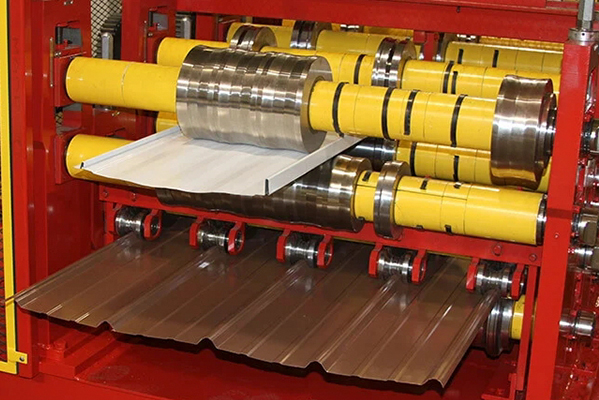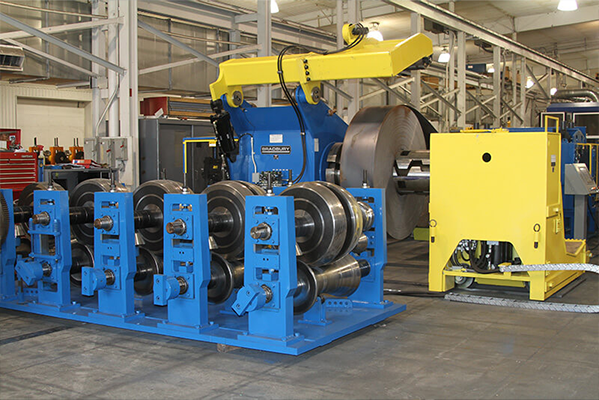Navigation Menu
Contact Us
- Email:
- info@wxavatar.com
- Address:
- Yurong Village, Yuqi Street, Huishan District, Wuxi, China.
Release Date:Apr 18, 2025 Visit:1 Source:Roll Forming Machine Factory
Contour roll forming is a metal shaping technique used to produce long, continuous components with consistent cross-sectional profiles. This method is suitable for manufacturing parts with varying widths, depths, or geometries along their length. The process involves a series of steps to transform flat metal strips into desired shapes while maintaining structural integrity.
Key Stages of Contour Roll Forming
1. Material Preparation
The process begins with the selection of a metal coil, typically made of steel, aluminum, or other formable alloys. The coil is unwound and fed into the roll forming machine, where it undergoes leveling to ensure flatness before shaping.

2. Pre-Cutting (Optional)
Depending on the design requirements, the metal strip may be pre-cut into specific lengths before forming. This step is useful for parts with varying profiles or when material efficiency is a consideration.
3. Progressive Roll Forming
The metal strip passes through a series of roller dies arranged in tandem. Each set of rollers incrementally bends the material, gradually forming the desired cross-section. Unlike standard roll forming, contour roll forming adjusts the profile along the length of the part by modifying the roller positions or pressure during production.
4. Variable Geometry Adjustment
To achieve changing profiles, the roll forming machine may incorporate adjustable tooling or computer-controlled actuators that alter the forming parameters in real time. This allows for smooth transitions between different section depths or widths.
5. Cutting to Length
Once the forming process is complete, the continuous profile is cut into individual pieces using a flying cutoff saw or hydraulic shear. Precision cutting ensures dimensional accuracy and clean edges.
6. Secondary Operations (If Required)
Additional processes such as punching, embossing, or welding may be performed to add functional features to the formed parts. These operations can be integrated into the production line for efficiency.
Advantages of Contour Roll Forming
Consistent Quality: Produces uniform parts with tight tolerances.
Material Efficiency: Reduces waste compared to alternative fabrication methods.
Flexibility: Capable of creating complex, variable profiles in a single operation.
High Production Speed: Suitable for large-volume manufacturing.

Applications
Contour roll forming is commonly used in industries such as construction, automotive, and aerospace for producing components like structural supports, trim pieces, and specialized railings.
By following these steps, manufacturers can efficiently produce customized metal profiles with varying geometries to meet specific design requirements.